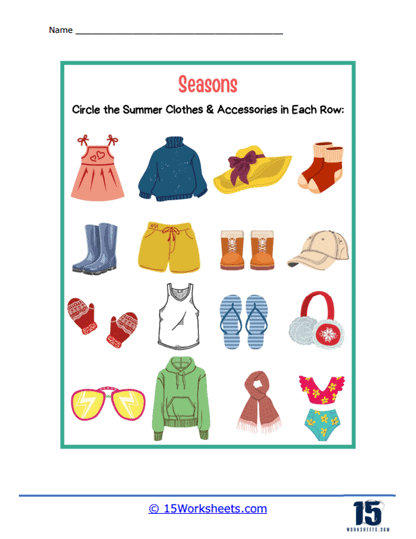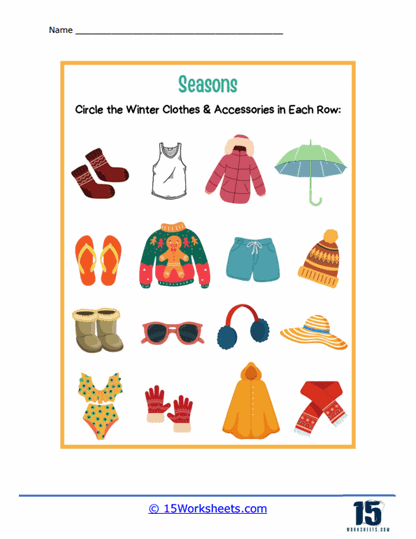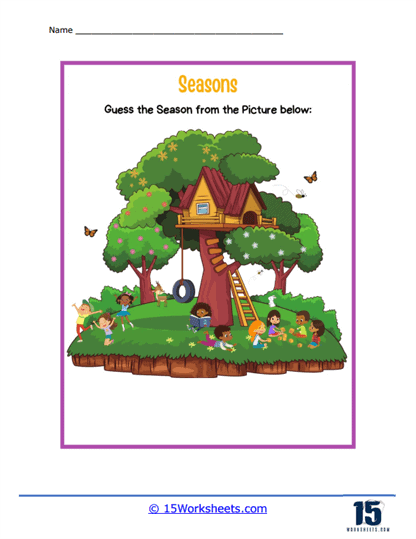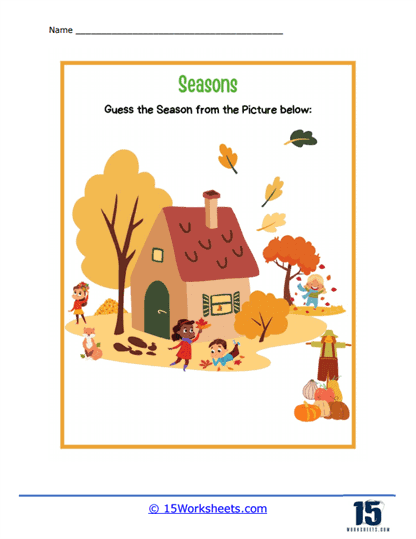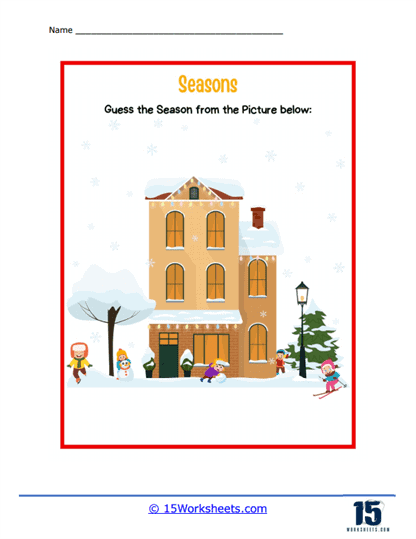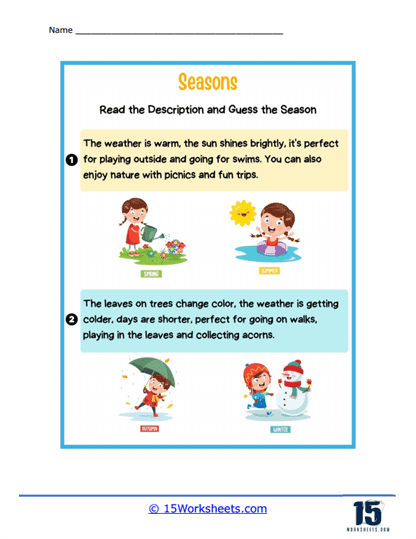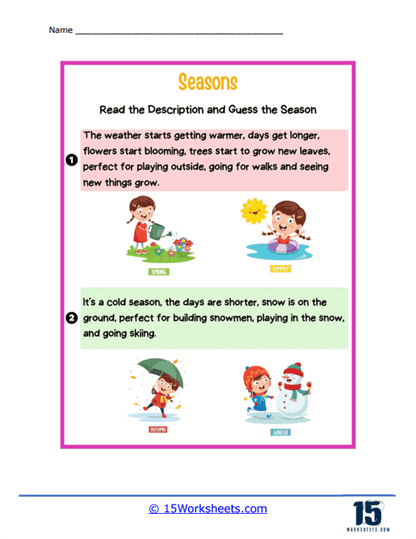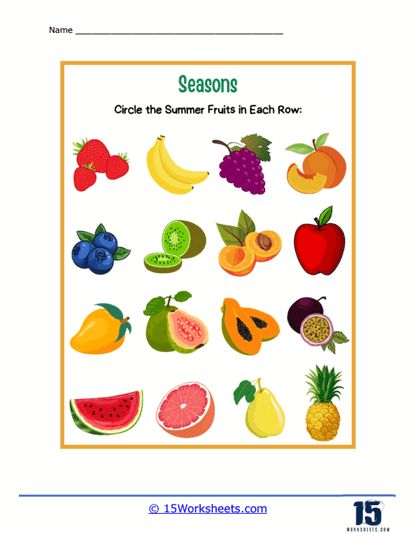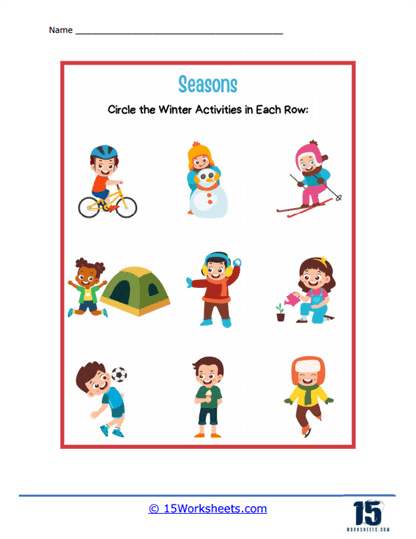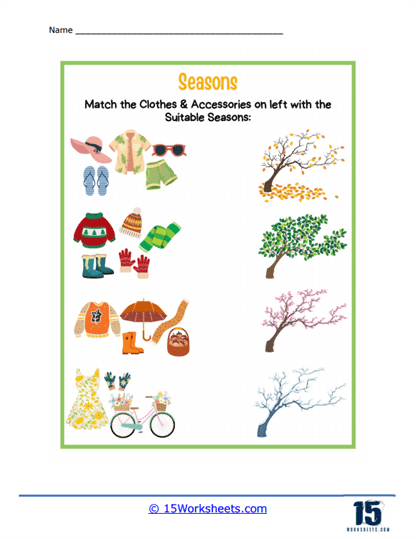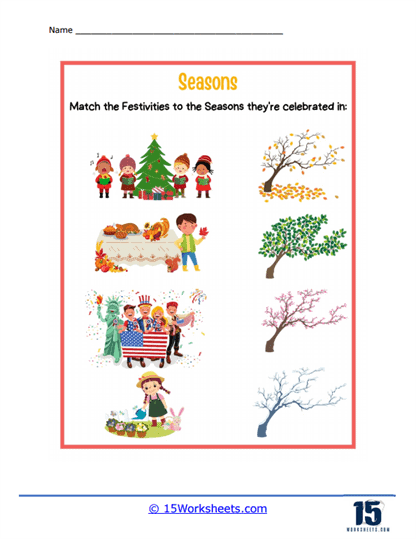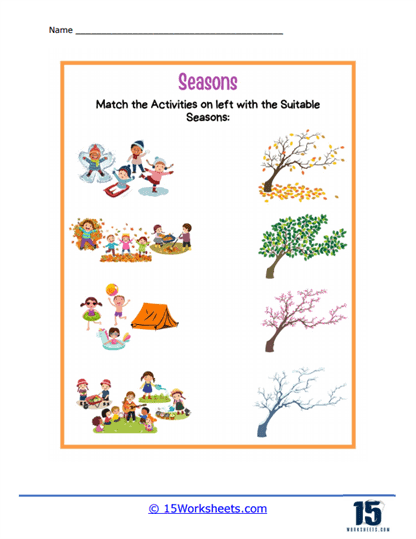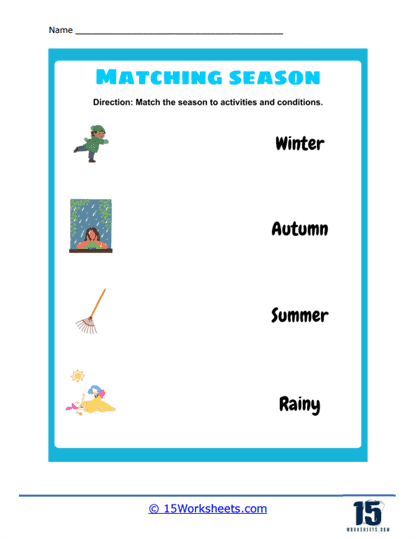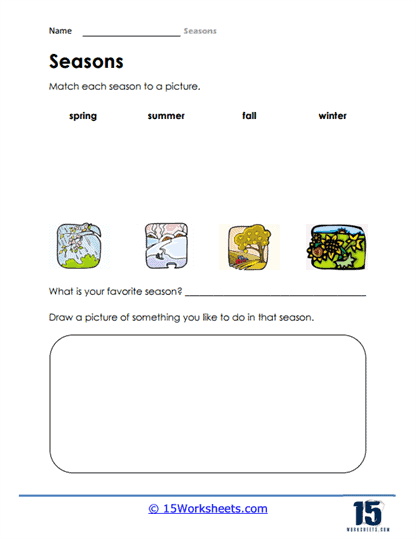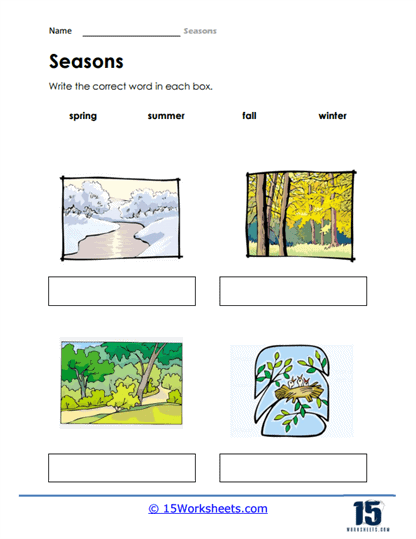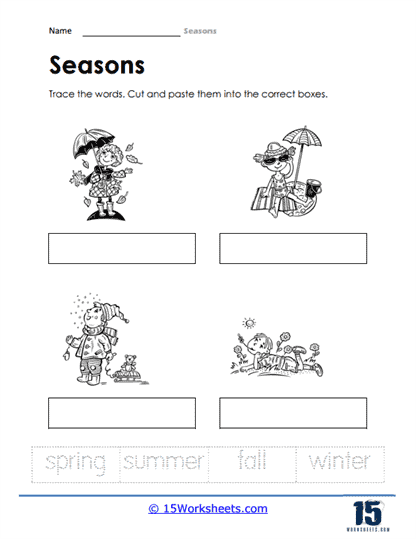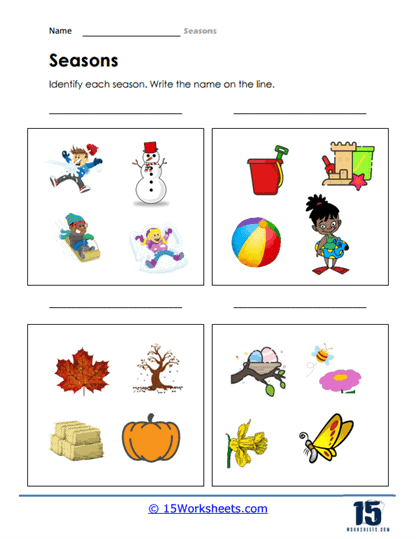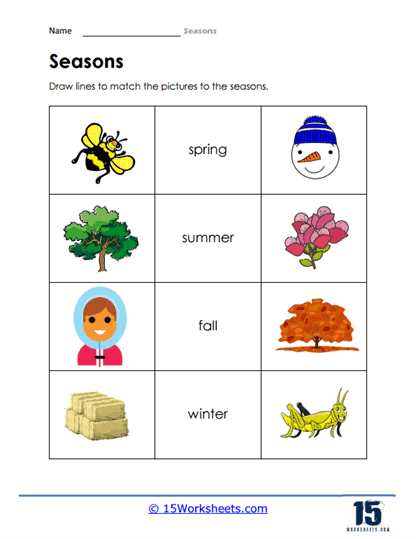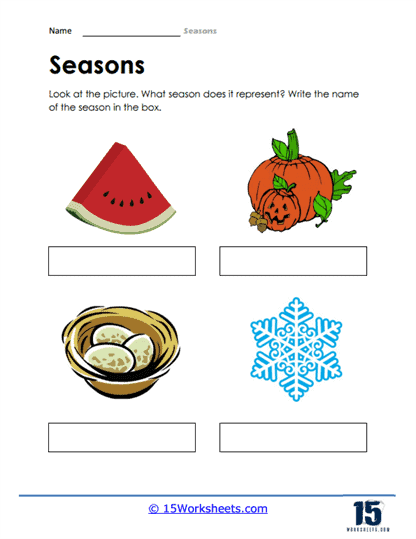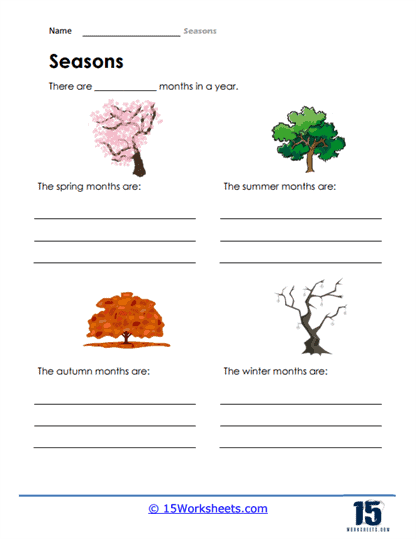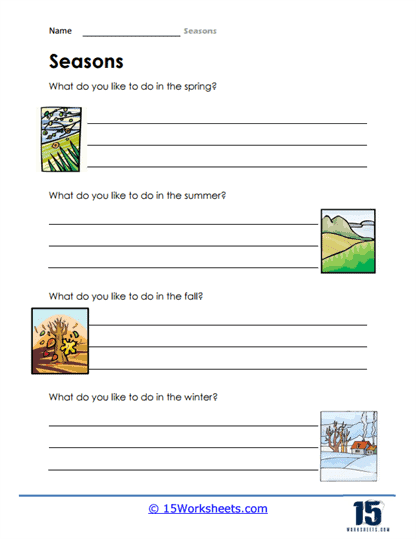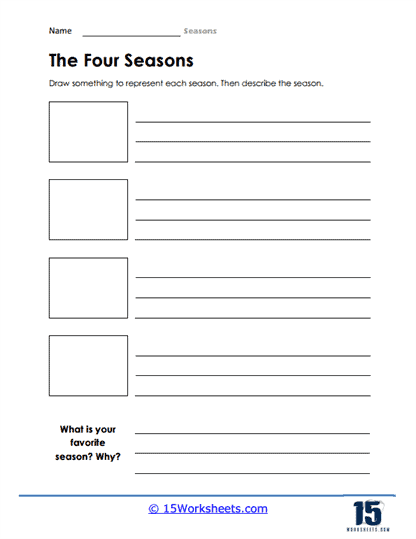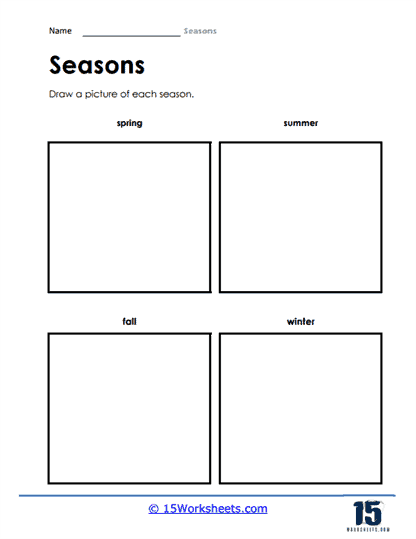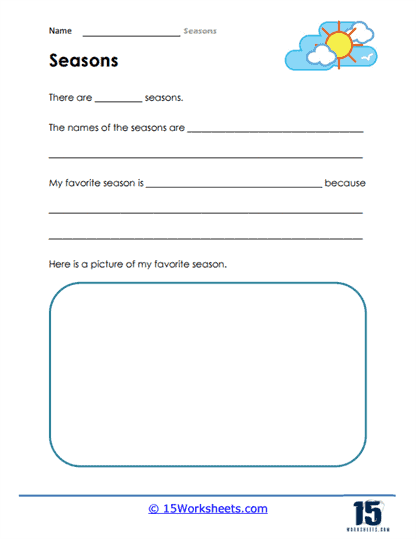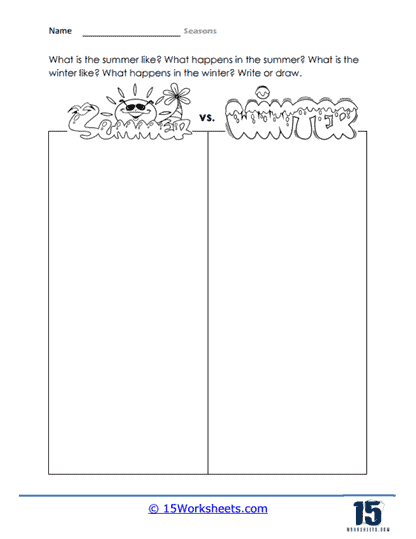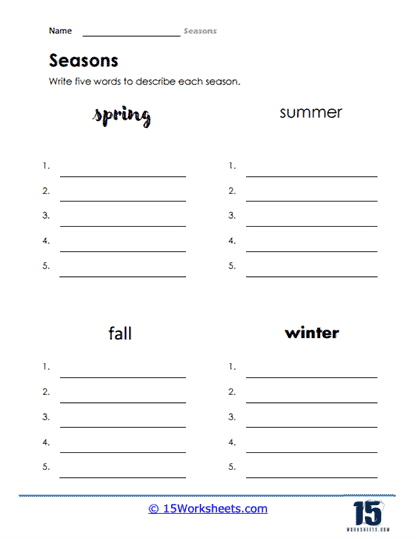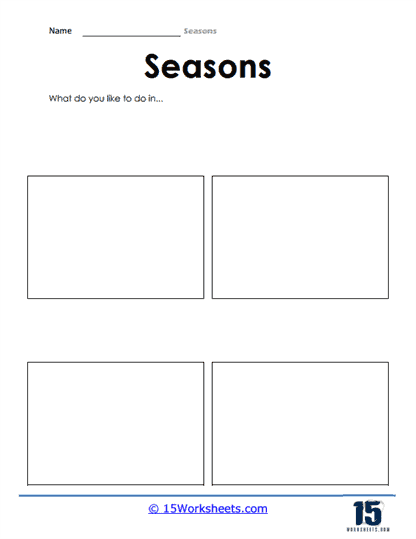Seasons Worksheets
What Are the 4 Seasons of the Year?
The tilt in Earth’s axis with its orbit around the Sun is the reason why we get to experience different seasons. The four seasons—spring, summer, fall, and winter vary significantly in climatic conditions and day lengths. Each has different attributes depending upon the location experiencing them, and their starting and ending dates are almost always similar every year.
Spring
After the cold, wet winters, the spring season brings about a new landscape in its wake. The days begin to grow long, and the strong sunlight causes the temperature to rise.
New leaves start growing on some trees, and many plants burst into colorful flowers. Hibernation ends, and the sleeping animals start coming out of their dens. Birds and animals start their journey towards their summer homes and get ready to breed.
The weather keeps on changing through the day. It can be sunny and dry in the morning and wet and showery in the afternoon. Melting snow from the winter season and the added rainfall sometimes cause flooding along waterways.
The Spring season starts in March in the Northern Hemisphere and September in the Southern Hemisphere.
Summer
Summer is the hottest season, with temperatures rising to the year’s maximum. This raised temperature keeps the climate warm, even after the Sun has gone down for the night.
Some areas receive heavy rainfall, although heatwaves or droughts can occur if the temperatures rise too high, causing fatalities among people, animals, and plants. Forest fires are becoming increasingly common in areas with high temperatures.
Vegetation and plant growth spike during summers and many seasonal fruits and vegetables are available in the market. This is usually considered a leisurely time with people enjoying the long, sunny days.
The northern hemisphere experiences summer from June to September and the southern hemisphere from December to March.
Fall
In Fall or Autumn, temperatures start cooling down, and days get shorter. Lack of chlorophyll (the chemical that gives green color to the leaves) causes the leaves to turn to shades of reds, oranges, yellow and brown.
Some plants start producing seeds to grow new plants in spring. Some animals grow thick fur to survive the cold winter months, while some gain weight to prepare for a deep sleep called hibernation to take them through the winters.
In the northern hemisphere, the fall season lasts from September to October, while in the Southern hemisphere, it is from March to April.
Winter
With the shortest days and longest nights, winter is the coldest season of the year. Plants and trees lose their leaves and go dormant during this season. Some animals survive by entering a deep sleep called hibernation to help save energy. Some animals and birds migrate to warmer regions until the season changes.
In some regions, the snow and ice accompany the freezing wind. People cover themselves with warm clothes and heat their homes to avoid the chill.
The northern hemisphere experiences winter from November till March and the Southern hemisphere from May to September.
Areas near the equator do not get to experience drastic changes in the weather. It remains relatively constant throughout the year. For regions away from the equator, the seasons vary in intensity and duration.
Teaching Kids the Seasons
Teaching kids about the seasons helps them understand the natural changes that occur throughout the year and how these changes affect the weather, plants, animals, and daily life. Here are some strategies to effectively teach children about the seasons:
Introduce the Concept – Start by explaining that there are four seasons in a year – spring, summer, fall (or autumn), and winter. Briefly describe the general characteristics of each season, such as temperature, weather, and changes in nature.
Use Visual Aids – Provide visual aids, such as posters, charts, or photographs, that showcase the unique features of each season. These visuals can help children understand and remember the differences between the seasons more easily.
Discuss Seasonal Changes – Talk about the specific changes that occur during each season, such as the blossoming of flowers in spring, the heat and longer days in summer, the falling leaves and cooler temperatures in fall, and the cold, snowy weather in winter. Also, discuss the changes in clothing, activities, and holidays associated with each season.
Read Books and Stories – Read books or stories that focus on the seasons or have seasonal themes. Discuss the seasonal elements within the context of the story to help children relate to the concepts and make them more interesting.
Sing Songs and Rhymes – Teach children songs or rhymes that incorporate the seasons. This can help make learning more fun and memorable.
Create Seasonal Crafts and Activities – Organize crafts or activities related to each season, such as making paper flowers for spring, creating sun-themed crafts for summer, painting fall leaves, or building paper snowflakes for winter.
Observe Nature – Encourage children to observe the seasonal changes happening around them by taking them on nature walks or having them observe their surroundings. Discuss the changes they notice and how they relate to the current season.
Use a Calendar – Teach children to identify the months associated with each season using a calendar. This will help them develop a sense of time and understand the progression of the seasons throughout the year.
Science Connections – Explain the science behind the changing seasons, such as the Earth’s tilt and its orbit around the sun. This can help children understand why the seasons occur and how they affect the environment.
Be Patient and Positive – Learning about the seasons may take time and practice. Be patient, offer guidance, and provide positive reinforcement to encourage children’s learning.
Remember to make learning about the seasons engaging and fun for children. With consistent practice and exposure to the concepts, they will develop a solid understanding of the seasons and their effects on the world around them.

